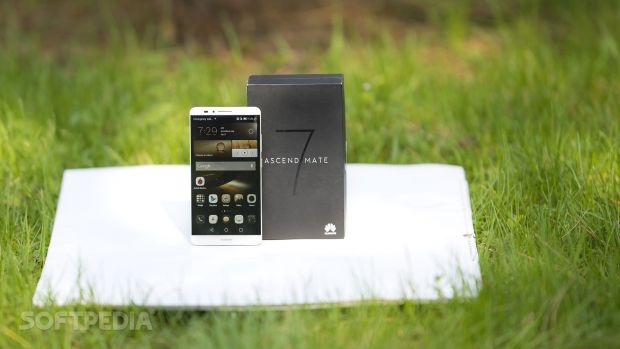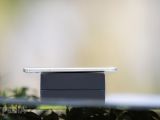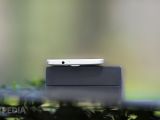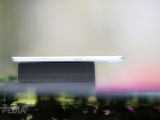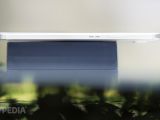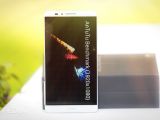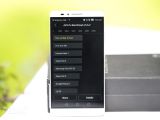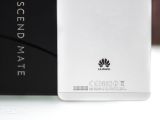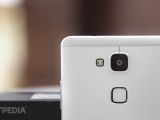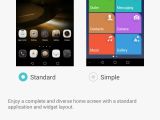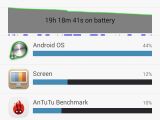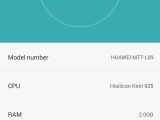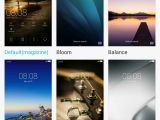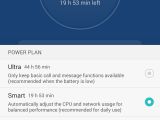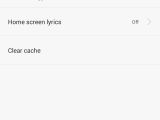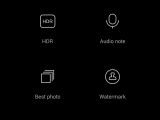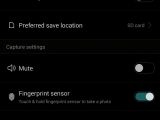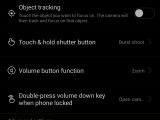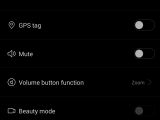Huawei has yet to enter the top 5 smartphone makers, but even without this achievement, the Chinese company is an important competitor in the smartphone business.
Its products in the low-tier are well known among consumers, as Huawei is building smartphones for some of the most important carriers worldwide.
The Ascend Mate7 is one of the few high-end devices released by Huawei but not the first to enter the phablet category. Thanks to its huge 6-inch display and premium look, Huawei Ascend Mate7 can easily compete with other flagship smartphones launched last year, such as Samsung Galaxy S5, HTC One M8, and LG G3.
Even though the Ascend Mate7 is one of the best smartphones ever launched by Huawei, it's not without faults. The Chinese company had to make some compromises in order to keep the price low but offer some high-end features at the same time.
One thing is clear though: Huawei plans to compete on the top-tier smartphone market, and judging from the Ascend Mate7's specs and design, the Chinese company is doing a pretty good job.
Design - How big is big?
Since we have already established that Huawei Ascend Mate7 is a phablet, it won't come as a surprise to mention that the smartphone boasts a huge 6-inch display.
Furthermore, the Ascend Mate7 measures 157 x 81 x 7.9mm and weighs around 185g (battery included). Opposite to what many would think, Huawei Ascend Mate7 is not that big in comparison with other phablets.
For example, it's slimmer than Samsung Galaxy Note 4, which is 8.5mm thin, and smaller than the iPhone 6 Plus, which measures 158.1 x 77.8mm.
It looks like Huawei's engineers did a great job and managed to remove the phone's bezels almost entirely. With a 83% display ratio, the Ascend Mate7 is much smaller than another phablet with 6-inch display, the Lumia 1520, which measures 162.8 x 85.4 x 8.7mm.
Another strong point of Huawei's phablet is the overall build quality, as more than 90% of the Ascend Mate7 is made of metal. The aluminum alloy that dresses up the phone's chassis is less prone to fingerprints than many other smartphones featuring metal bodies.
Looking at it from the front, the Ascend Mate7 resembles the HTC One series sans the stereo speakers. Huawei's phablet features just one speaker that's places on the back side of the phone.
Right above the 6-inch display, there's a 5-megapixel camera and a range of sensors. The smartphone features on-screen controls and a fingerprint scanner on the back, right below the main 13-megapixel camera.
On the left side of the phablet, there are two slots that can be used to add microSD and microSIM cards. The right side of Huawei Ascend Mate7 features the volume key and power on/off key.
The 3.5mm audio jack and a microphone are place on top of the smartphone, whereas a second microphone and the microUSB port are on the bottom side.
One downside would be the fact that the Huawei Ascend Mate7 does not come with a removable battery, so you won't be able to pull out the back cover of the smartphone.
Display and camera promise great features
With a 6-inch display embedded, the Ascend Mate7 should provide a great experience to users, but that isn't quite what we have expected. But first things first.
Huawei Ascend Mate7 sports a 6-inch IPS LCD capacitive touchscreen display that supports full HD (1080p) resolution and features Corning Gorilla Glass 3 coating for extra protection.
The phone's display offers 368ppi (pixel per inch) density, which is not even close to what other flagship smartphones provide. On top of that, the Ascend Mate7 is completely unusable in strong sunlight.
Those who plan on using Huawei's phablet outdoors should know that the Ascend Mate7 is terrible when it comes to sunlight legibility.
Apart from that, the 6-inch display has bright colors and decent-enough contrast. Huawei has also added a Glove mode and various options for color temperature.
Moving on to camera, Huawei Ascend Mate7's 13-megapixel photo snapper on the back allows users to take pictures with a maximum resolution of 4160 x 3120 pixels.
It can also capture full HD (1080p) video at 30fps, even though many of you would have expected it to at least be able to record videos at 60fps.
The main camera also packs a LED flash for taking pictures in low-light environments. The camera UI is pretty straightforward and includes lots of settings and modes.
Users will be able to take advantage of HDR, Panorama, touch to capture, smile shutter geo-tagging, ISO, white balance, and many more options.
When it comes to quality, the Ascend Mate7's camera takes really decent pictures. We've already attached some samples for your viewing pleasure, and they prove that Huawei did a good job with the camera.
There are plenty of details in the pictures and accurate-enough colors. The only thing we've noticed among the negatives would be the digital noise that sometimes appears in photos.
The same goes for videos, so the only downside would be the fact that the smartphone can't capture 4K videos or full HD (1080p) at 60fps.
On the front, the Ascend Mate7 packs a secondary 5-megapixel camera for video calls and selfies. It's also worth mentioning that the front-facing camera can capture HD (720p) videos.
Performance is stellar
Huawei Ascend Mate7 is not quite the most powerful smartphone released by the Chinese company, but it's certainly one of the best in its hardware range.
The phablet is equipped with Huawei's HiSilicon Kirin 925 octa-core chipset that accommodates two quad-core processors. The chipset packs four Cortex-A15 cores clocked at 1.8GHz, and four Cortex-A7 chipsets running at 1.3GHz.
In addition, the smartphone is powered by a Maly-T628 graphics processing unit and 2GB of RAM. Huawei also launched a 3GB version of Ascend Mate7, but it's only available in some regions.
The synthetic benchmarks we've run on the phablet show that Huawei Ascend Mate7 can beat by a hair other high-end smartphones like Samsung Galaxy S5 and HTC One M8.
Obviously, it can compare well with current flagships such as Galaxy S6 and HTC One M9, which pack newer and more powerful chipsets.
The 2GB version of Huawei Ascend Mate7 comes with 16GB of internal memory, but the 3GB model has 32GB of storage. No matter which version you get, you will be able to further expand the internal memory up to 128GB via a microSD card slot.
Emotion UI 3.0 is quite a treat
Even though the Ascend Mate7 ships with Android 4.4.2 KitKat operating system right out of the box, Huawei is expected to offer a Lollipop upgrade in the coming months.
On top of that, the Chinese company has already updated Emotion UI to version 3.0. Although the changes aren't major, it's the little things that matter.
Overall, Emotion UI 3.0 is quite a treat since it's highly customizable and offers smooth animations and transitions. It features a flat look and a plethora of personalization options. There are lots of wallpapers and themes that you can take advantage of, as well as tweaks and nifty features.
I liked Huawei's proprietary UI more than Samsung's TouchWiz user interface, which is an indication that Chinese company's designers made great progress in developing the perfect UI for smartphones.
For example, the theme that you decide to use will change the wallpaper, lockscreen style, system and app icons, as well as the system color, system font and sound profile.
If you swipe down from the upper side of the display, you will be able to access the notification area, which is split in two: Notifications and Shortcuts. If you tap on the Shortcuts tab, you will get access to the quick toggles, where you can enable Wi-Fi, Bluetooth, Sound profile and many other.
Huawei also introduced a power management feature that notifies users when a certain application or services consume more energy than they should. You can then decide whether to close them or not.
Other nifty features like one-hand optimization, DnD (do not disturb) mode, Glove mode, Task Switcher, and Suspend button were included as well.
Connectivity
Given the fact that this is a high-end smartphone, Huawei decided to include a wide range of connectivity options, among which LTE Cat.6 (300Mbps download), Wi-Fi a/b/g/n, Bluetooth 4.0, and microUSB 2.0.
The phablet also comes with NFC (Near Field Communication) for on-the-go payments, GPS with AGPS, as well as DLNA and FM Radio.
We've already said that Huawei has launched a 3GB version of the Ascend Mate7 as well, but we have not mentioned that it will also offer dual-SIM support.
If you plan on using the Ascend Mate7 as a remote controller, then you should know that this feature won't be available because the phablet lacks IR blaster.
I should also note that the in-call sound is on the average side when it comes to quality. There are times when the sound is a bit muffled and lower than expected, but that shouldn't be considered a downside.
Battery is impressive, but only on paper
Because the Ascend Mate7 boasts a huge 6-inch display, Huawei had to include a powerful battery that should provide enough juice for the screen. And they did that by adding a 4,100mAh battery, which isn't removable.
Unfortunately, the battery is only impressive on paper because we did not get more than two days of average use, which means than heavy users will barely get 1 day and a half at most with a single charge.
The best thing about the phone's battery is that you can get about a week of standby, but that means that you have to disable Wi-Fi, mobile data, and other features that drain the battery.
If you limit your use of Ascend Mate7 to just a few minutes of talking every day, than you will get up to one week of use, but who does that?
On top of that, as we've mentioned earlier, the battery is non-removable, so you can't replace it when it's drained. Huawei Ascend Mate7 does not come with wireless charging or fast charge battery, so there no real advantage to having a 4,100 mAh battery inside the phablet.
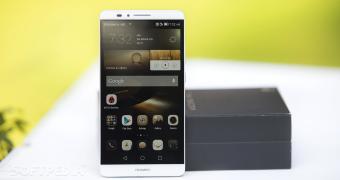
 14 DAY TRIAL //
14 DAY TRIAL // 